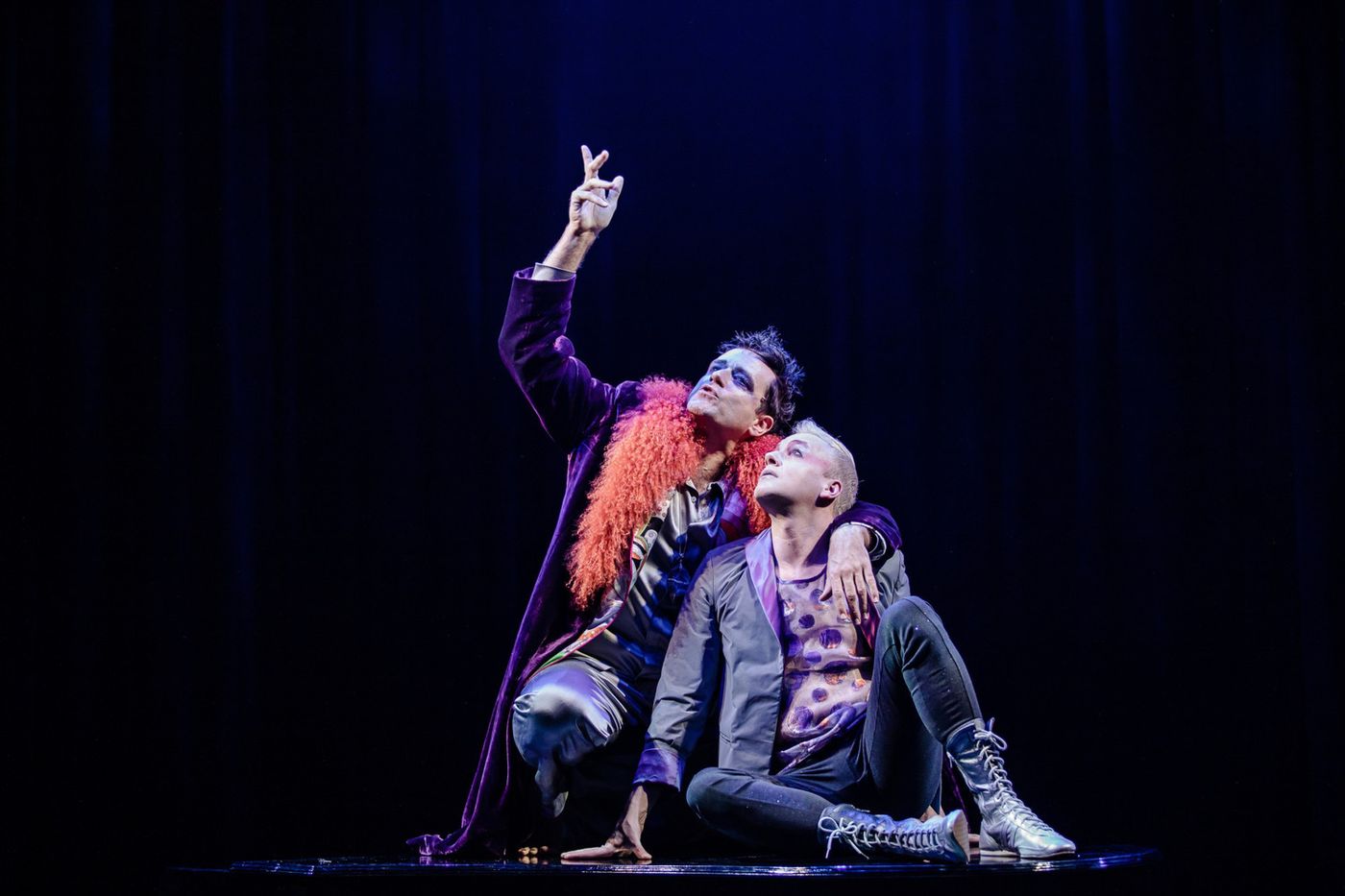Review: A MIDSUMMER NIGHT'S DREAM, Sheffield Crucible

![]() Sheffield Theatres' Artistic Director, Robert Hastie, returns to direct another Shakespeare play on the Crucible main stage following last year's Julius Caesar.
Sheffield Theatres' Artistic Director, Robert Hastie, returns to direct another Shakespeare play on the Crucible main stage following last year's Julius Caesar.
This time, attention is turned to A Midsummer Night's Dream. A vast moon hangs over the circular stage, surrounded by white roses growing eerily from a mirrored black floor. A piano sits front and centre, serving as the only piece of furniture, as well as being the only instrument used in the songs.
The songs, sometimes omitted altogether, have become one of the main draws of this particular production. Publicity materials have proudly trumpeted that Dan Gillespie Sells, one of the team behind the triumphant Everybody's Talking About Jamie, has composed new music for this production.
Indeed, our narrator Bobby Delaney (as Puck and Philostrate) feels a bit like a grown-up Jamie New who has wandered out of his school prom and into this world (this is by no means a bad thing). Delaney is a charismatic presence and is just one highlight within a strong cast.
Almost all of the cast double as fairies in addition to playing lovers/mechanicals, so they are rarely offstage, and they display real energy and comic timing. Daniel Rigby is clearly relishing the role of Bottom, but there are moments for everyone to shine, especially in Act II, which has scene-stealing moments for many characters. Sophia Nomvete's Quince, Francesca Mills' Snug and Liam Gerrard's Snout, in particular, command huge laughs.
As you would hope, the songs are a real high point. They are used not only in scenes with the fairies, as traditional, but several other parts of the play. The most notable is the transformation of the play-within-the-play into a full-on glam rock musical extravaganza. The only song that didn't work for me was a new one written for Titania using contemporary language - perhaps if there had been more new songs written, this might have stuck out less.
Unfortunately, however, whilst the music is present throughout most of Act II, it is only used sparsely in Act I. Its presence lifts the action and transforms the play into something memorable, but the first act could really have done with some more musical input to give it a sense of distinctiveness.
The use of music is not the only discrepancy between the two acts: they differ significantly in pace, staging and tone. The production ramps up the comedy and the audaciousness as it develops, but not quickly enough in Act I.
The second half decides to embrace the silliness inherent the play, turning the lovers' running around arguing into a piece of physical slapstick, and culminating in the play-within-a-play at its most over-the-top. The choice of really pushing the comedy to physical and outlandish extremes won't be to everyone's taste, but the audience were hooting with laughter - it's a shame that the first act feels a little flat in comparison to the raucous second.
In particular, the lovers seem tonally mismatched from Act I, where their trials are portrayed more seriously. The threat Egeus has made to Hermia at the start to cast her out or even kill her should she refuse to marry Demetrius seems genuine and serious (although doesn't sit well with either the contemporary setting, or the omission of the character of Egeus from this production - and it is never resolved) but this seriousness is at odds with the slapstick that follows.
Perhaps if the threat were played from the start as a clear overreaction from the characters, rather than genuine - allowing us to be in on the joke that they are all ridiculous - it might have made the building of comedy feel more natural. There is also a moment where Demetrius and Lysander violently restrain the much smaller Hermia that is played for laughs which feels like a misstep, especially in the present political climate.
The production is beautifully lit - designer Richard Howell has made really creative use of UV light, sparkling effects, glitterballs, gobos and spotlights - but, again, it's in the second act where this comes to life. The same is true of Chiara Stephenson's design - there is much more movement of set in Act II than in Act I, where the dark floor, black curtain backdrop and piano feel a little too stark and pared back at times.
Despite the problems with the first act, this is still a production worth seeing. The performances are high-energy, the songs a real treat and the second act is a blast.
A Midsummer Night's Dream is at the Crucible Theatre until 20 October.
Photo by The Other Richard.
Reader Reviews
Videos

